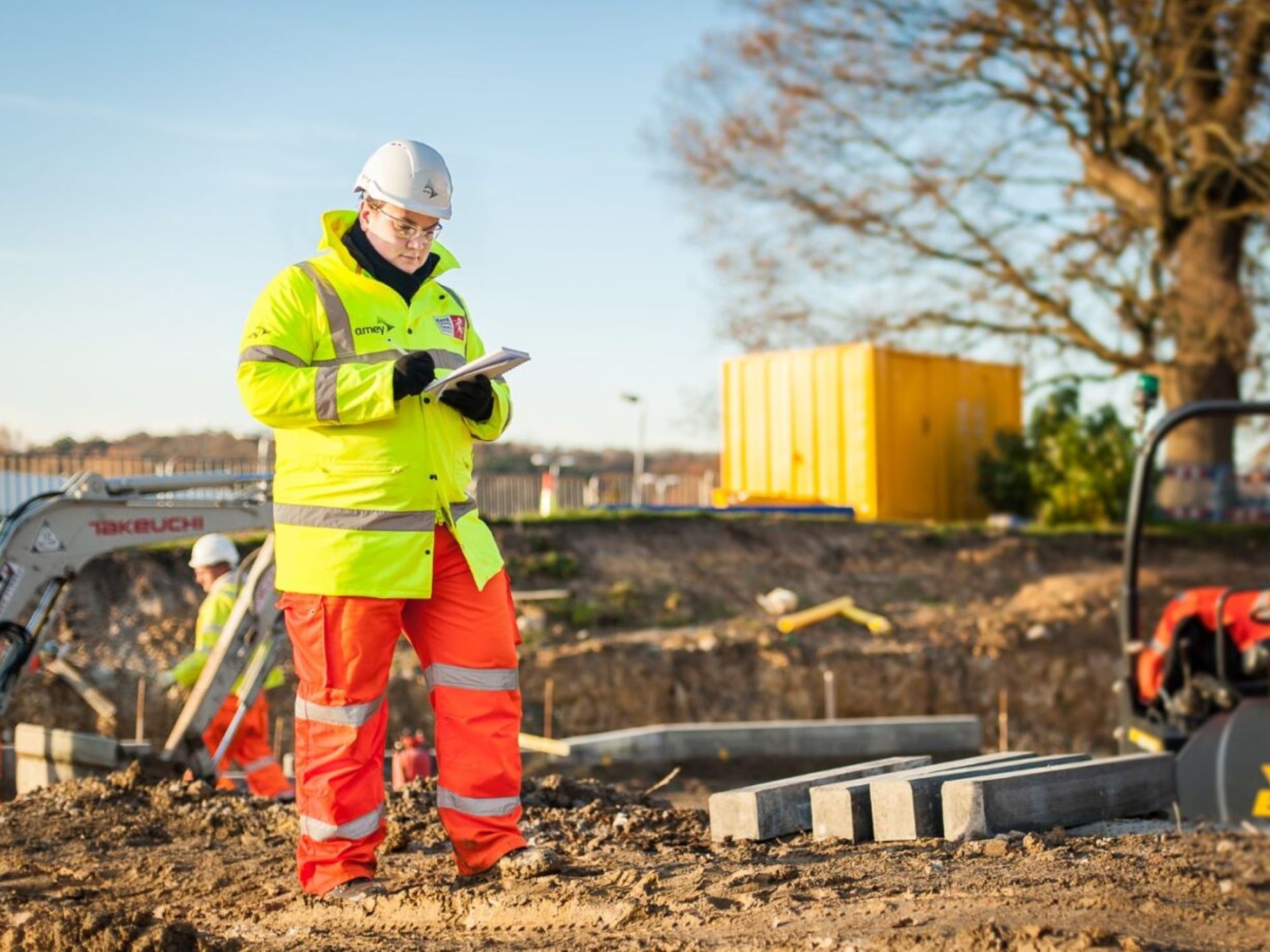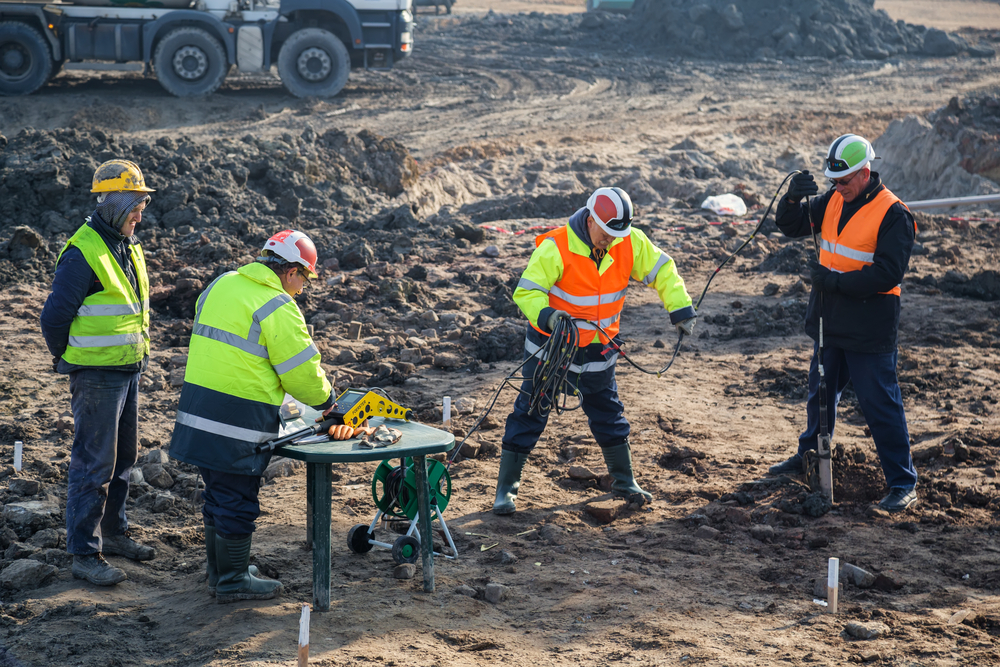The 10-Minute Rule for Consulting Engineers
The 10-Minute Rule for Consulting Engineers
Blog Article
Facts About Consulting Engineers Uncovered
Table of ContentsWhat Does Consulting Engineers Mean?The Consulting Engineers DiariesHow Consulting Engineers can Save You Time, Stress, and Money.Some Known Details About Consulting Engineers Not known Factual Statements About Consulting Engineers The smart Trick of Consulting Engineers That Nobody is Talking AboutThe Facts About Consulting Engineers Uncovered

A career in geotechnical design, like most kinds of engineering, needs one to be a long-lasting pupil. One of the most vital qualities for a geotechnical designer is sound reasoning (read Ralph Peck's thoughts on the matter).
Not known Details About Consulting Engineers
There are countless exciting emerging modern technologies in geotechnical design. Right here are a couple of examples: Ground improvement using bio-inspired and bio-mediated geotechnicsRunout modeling and simulation of mass losing eventsUse of sustainably sourced geomaterials As a geotechnical designer, one will certainly commonly have to very closely engage and function with other specialists.
Geotechnical engineering is a part of civil design that concentrates on just how planet materials like dirt, rock and groundwater communicate with manufactured structures, such as structures, bridges, dams and roadways. The objective is to make sure that the subsurface - the geology beneath any building - is qualified of supporting whatever is constructed on top.
What Does Consulting Engineers Do?
Their task is to explore the geological residential properties of the website - the dirt, the bedrock, the groundwater, the incline security - to evaluate its suitability for the recommended building and construction task. To determine potential dangers and dangers like settlement, slope instability and groundwater seepage. They pierce, take soil examples and utilize various tests to conduct this evaluation.
The geological and geotechnical usefulness of your site, and how it compares to bordering sites. The load bearing capability of the ground. The groundwater conditions and water circulation paths, and how they could affect the suggested construction - Consulting Engineers. The geotechnical engineer is then tasked with crafting options to any type of identified problems, utilizing concepts of hydrology and dirt and rock mechanics to make structures that can safely support the weight and stress of the structures that will be built.
More About Consulting Engineers
As a group, we thrive on open communication, expertise sharing, and continuous knowing. We promote a collective environment where diverse point of views are valued and everyone adds to group and job success. We purchase professional advancement, urge cross-functional partnership, and commemorate achievements together.providing elderly degree know-how and mentorship to the engineering team, testing the status-quo with cutting-edge thinkingdeveloping cross-team user interface agreements to make certain streamlined processes to sustain our asset projectscontributing to the advancement of new wire layout tools/software and leading the engineering deliverables for jobs to sustain the design and installationbuilding connections with sector companions and scholastic institutionssynthesising numerous geoscience datasets and comprehending exactly how ground-based risks impact technical and business a master's level in civil or geotechnical engineeringhave in-depth understanding of soil residential properties, ground-based risk and their influence on cord burial midsts, thermal rating, and installment methodsare proficient in mathematical modelling and growth of geotechnical tools for evaluation and designhave considerable tried and tested work experience in offshore power line setup/ design projects, preferably with overseas experience are a superb team gamer and a good communicator in multi-disciplinary engineering teams with strong industrial awarenesshave solid technical management skills.
As a candidate or employee, you may ask for practical job and setting lodging or adjustments through accomodation@orsted.com. Geotechnical engineers are included in all stages of the layout of frameworks, from principle to building and construction. Their work is important in the design and planning process as they evaluate the stability of dirt, clay, silt, sand, and rock, prior to building commencing.
The 10-Second Trick For Consulting Engineers

Geotechnical analysis is a need for anything that's constructed: on the ground, within the ground, in rock and made of soil and rock.
An Unbiased View of Consulting Engineers

Without these factors to consider in mind when intending your task, the concerns that you're investigate this site not gotten ready for become pricey and bring about unpredicted hold-ups during your building process. Industries which heavily count on geotechnical engineering: Transportation & Infrastructure Deep Foundation Underground Structures Ground Improvement & Soil Stabilization Scour and Disintegration In a globe where so a lot of what we do relies on the integrity and performance of our structures, it is easy to see why geotechnical engineering holds a crucial place in culture.
This helps all stakeholders entailed in a job to have a common vision and avoid confusion in the implementation phase. Learn more: BIM technology is being made use of in various aspects of the Style, Engineering, and Building And Construction (AEC) industry. Numerous areas such as architecture, interior decoration, landscape design, urban layout, civil engineering, architectural engineering, and geotechnical design are embracing BIM to level up their specialist video game.
How Consulting Engineers can Save You Time, Stress, and Money.
Architects, geotechnical engineers, and various other project stakeholders can collectively add to a common version, guaranteeing everyone works from the same details swimming pool. This joint atmosphere minimises miscommunication, minimizes mistakes, and boosts total job sychronisation. Geotechnical engineering entails copious amounts of data, ranging from soil structure to geological studies. BIM facilitates the integration of diverse data sets right into an unified electronic design.
Report this page